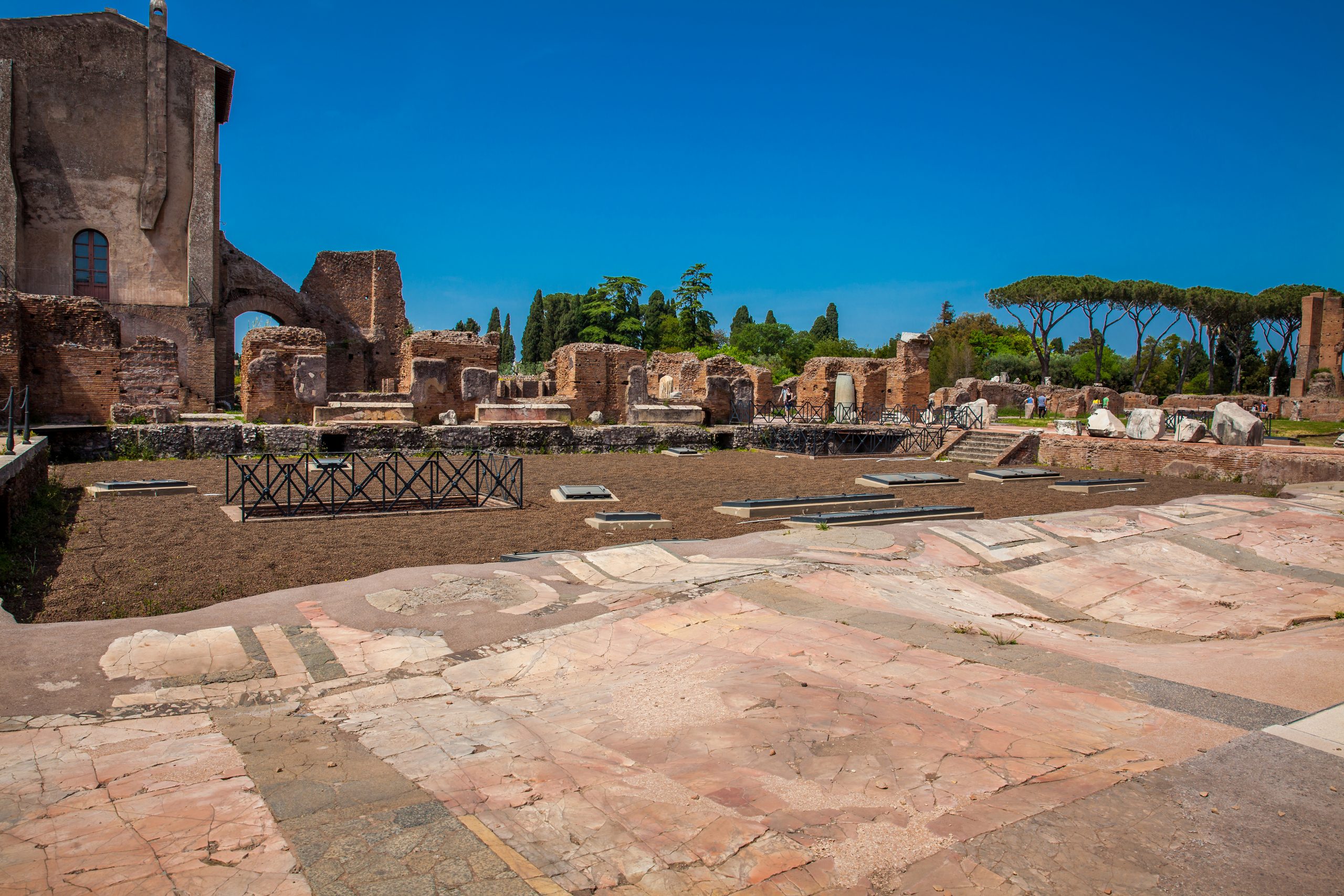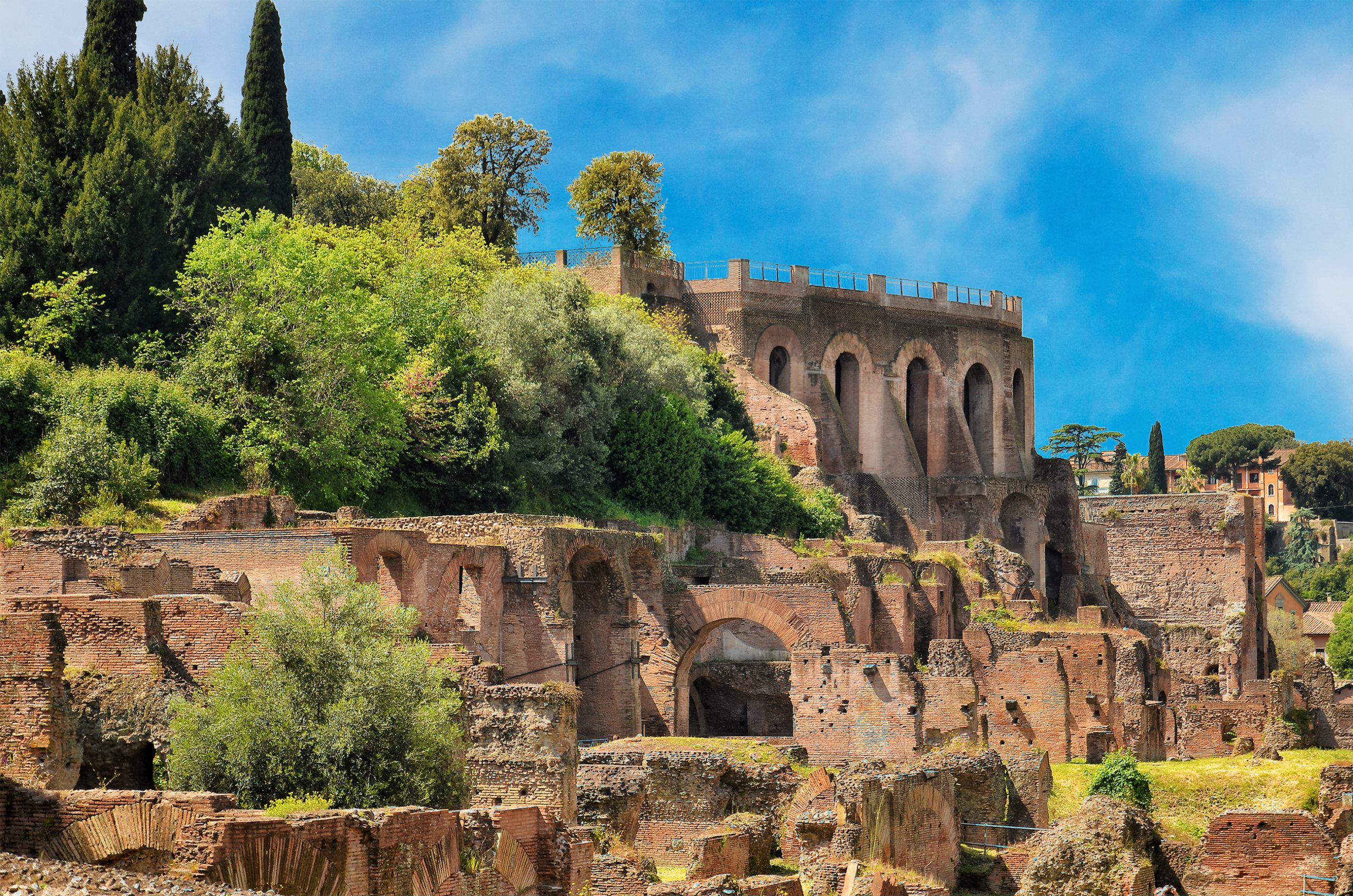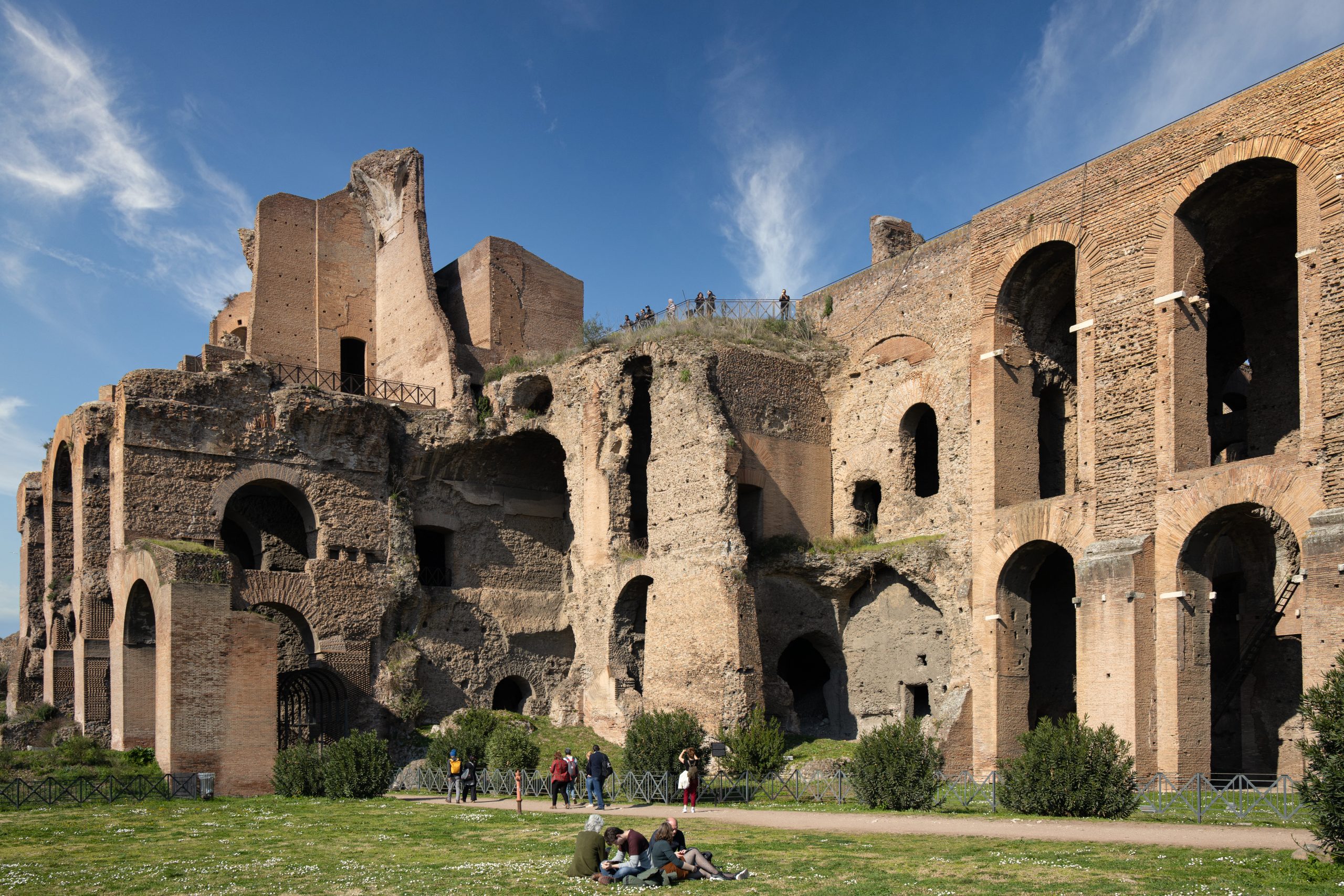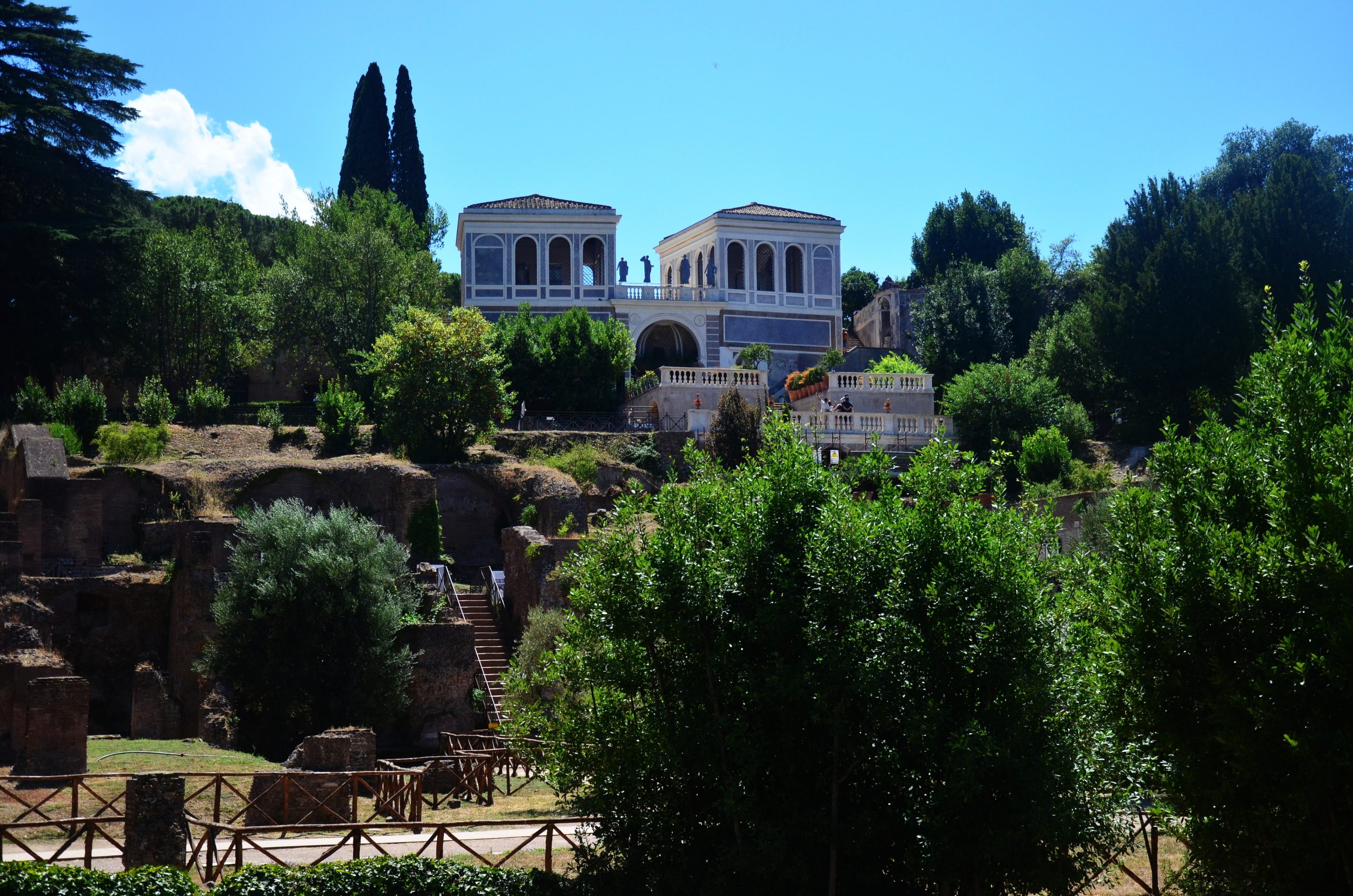Domus Flavia
The Emperor Domitian the homes and land of Roman nobles to build a grand palatial complex for himself which was split into three main sections: the Domus Flavia with the public rooms used for official business, ceremonies and entertainment, the Domus Augustana was used as the private living quarters; the Stadium of Domitian was a porticoed sunken garden, only accessible to the Emperor, his family and inner circle. The palace was built on top of the Domus Transitoria and the Domus Aurea of Nero and, in turn, later emperors made additions and some extended and built over Domitian’s palace.
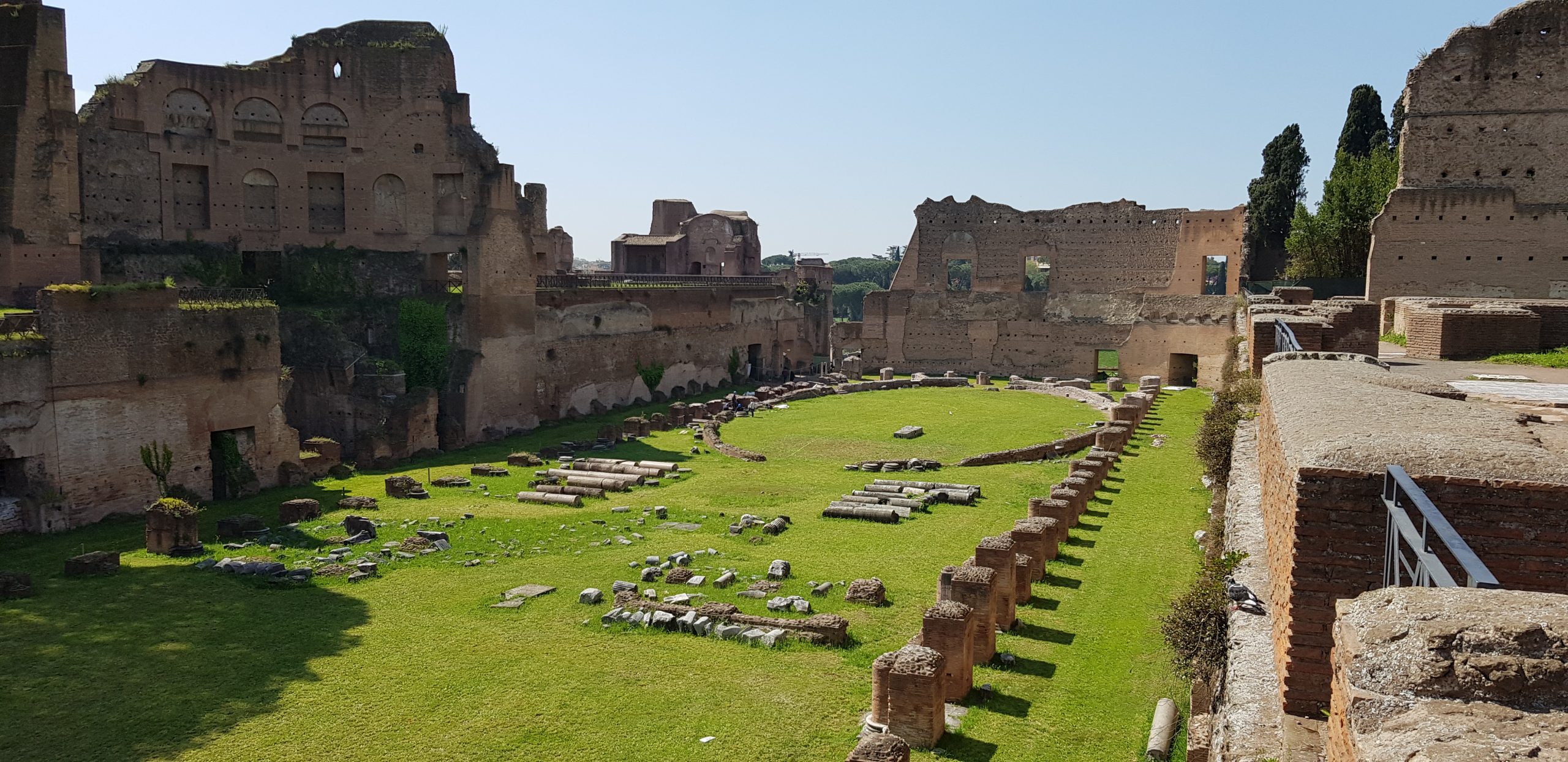
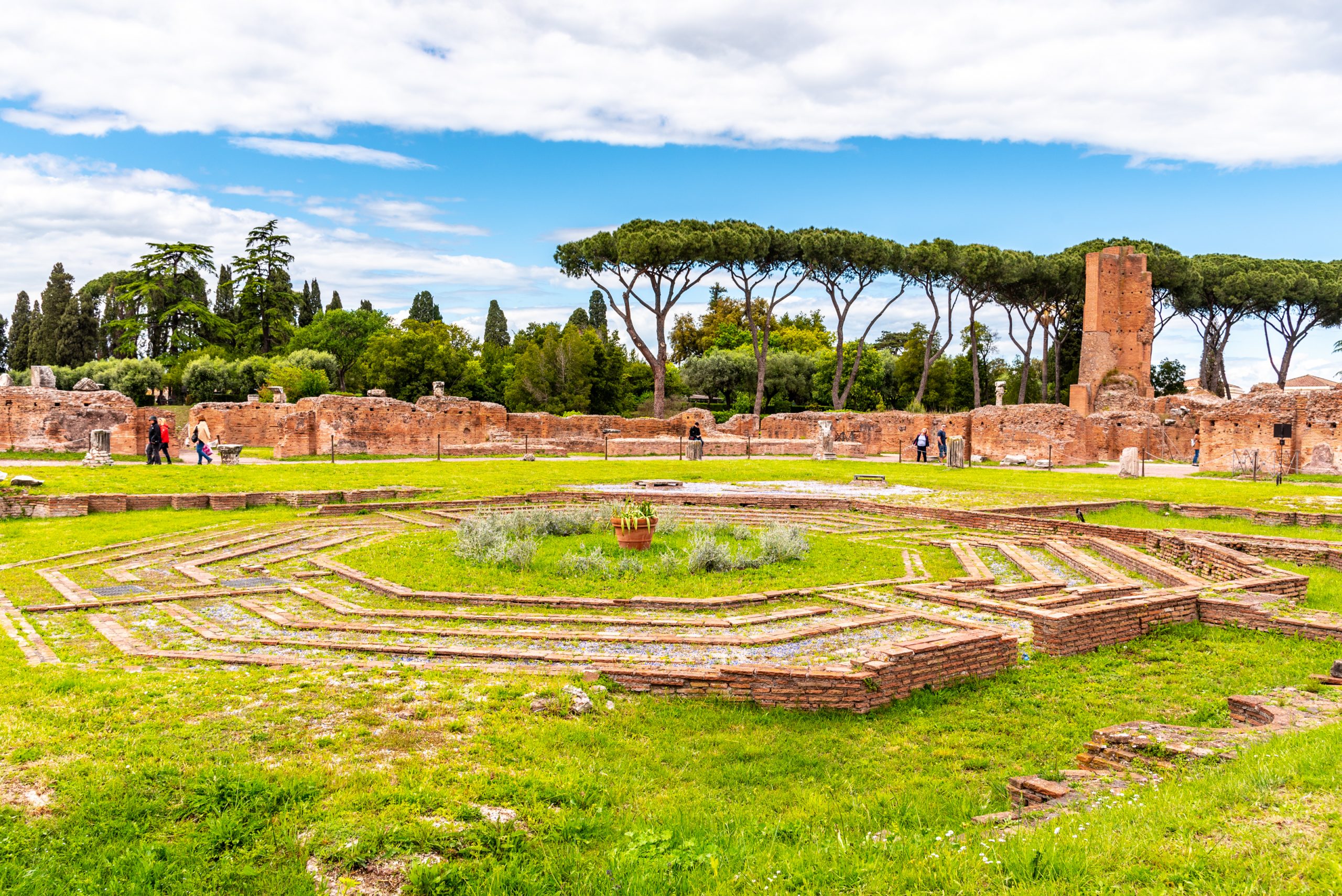
The public side of the Palace
The Domus Flavia is a modern name for the north-western section of Domitian’s Palace where the bulk of the ‘public’ rooms were concentrated. The main entrance faced the Roman Forum and could be accessed by a sweeping zag ramp which can still be seen today. To the south was the massive Aula Regia, an auditorium of sorts used to host important events and visitors. A large Basilica was used for important meetings – a more private setting for the emperor to conduct matters of vital importance to the empire. At the centre was a peristyle courtyard that featured an octagonal fountain surrounded by a peristyle court of yellow marble columns. The banquet hall, or cenatio, was the second largest room in the palace and was richly decorated; although there were several smaller dining rooms (triclinia) that had three couches, where diners would recline.
Faded Opulence
The opulence and extravagance of Domus Flavia’s rooms must have been overwhelming for those visiting the emperor on official business, this was the point. Domitian had rebuilt the hill between 81-92 AD giving the architect Rabirius carte blanche to do as he wished. Exotic coloured marbles covered the floors and walls. The buildings were set among colonnaded porticoes with grand fountains serviced by a new section of aqueduct. What remains today pales in comparison to the original extravagance and luxury, the walls would have once soared in excess of 30 metres in height.
